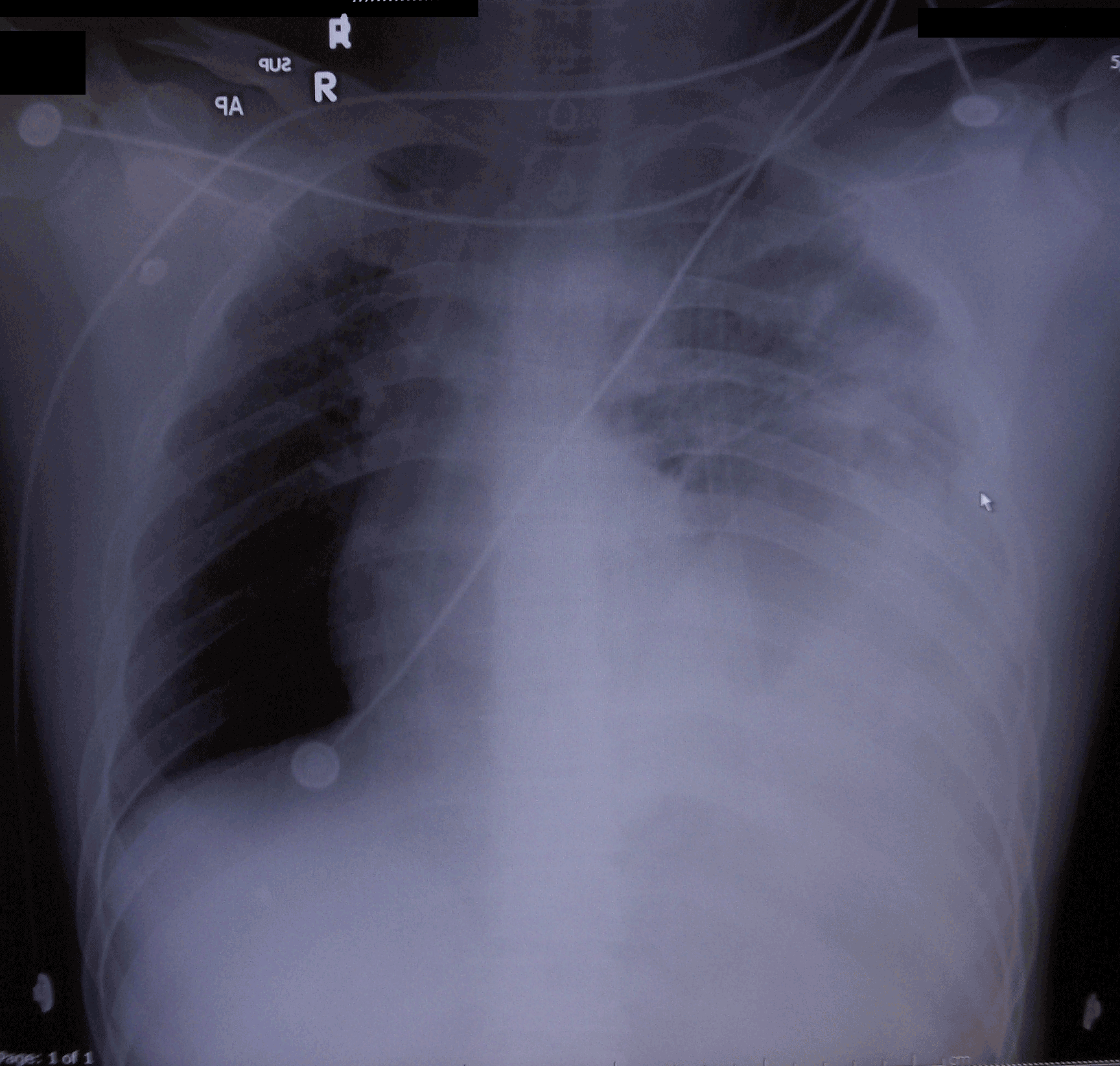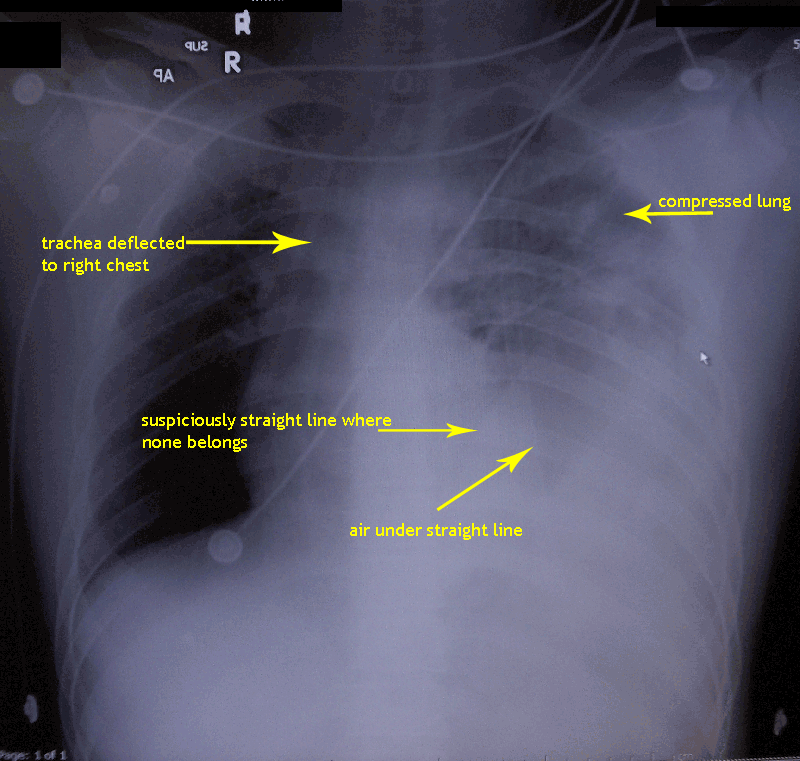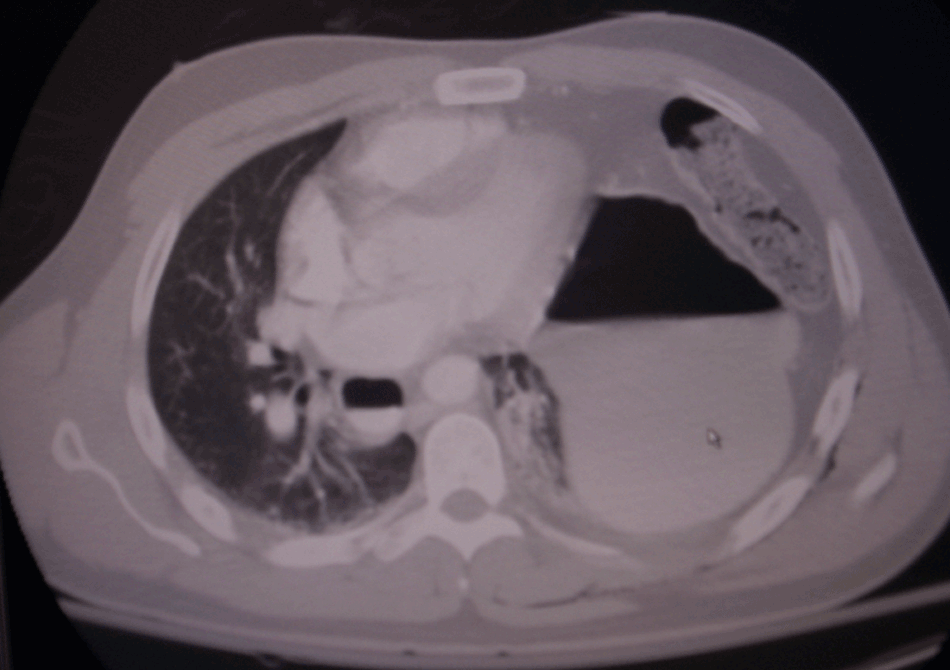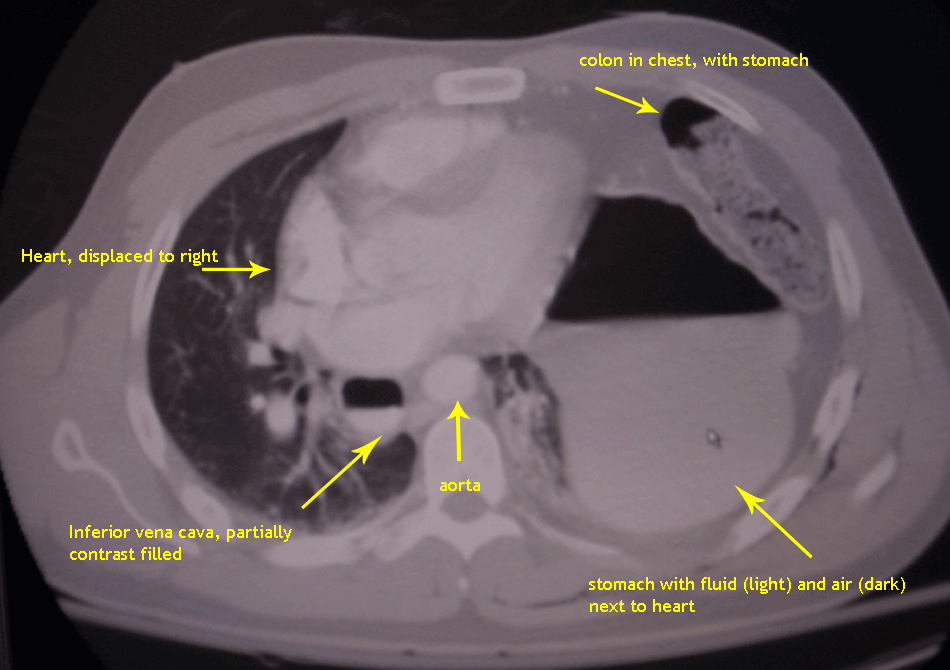On the 14th, I published an “unknown”, and challenged you to make the diagnosis. I am gratified that it got so many comments, and that people are interested in getting to the answer.
The correct answer is: left diaphragm rupture with herniation of the stomach and colon into the left hemithorax, with mediastinal shift. There are marked-up copies of the original in the extended entry to illustrate what we’re seeing, and to answer a few questions asked in the comments.
The patient was very short of breath, which was handily relieved by putting his bed into “reverse trendelenberg”, making his feet lower than his head. This caused the abdominal contents to stop compressing so much lung, and probably allowed the heart and great vessels to resume their normal position.
He went to the OR, and had his torn diaphragm repaired, a splenectomy, and his two pericardial tears fixed, leaving a pericardial window.







I throughly enjoyed participating Grunt Doc. I love stuff like this even though I am not as educated as you all are. Doc Russia did a couple of these a while back and I always looked forward to the challenge.
The colon in the chest on the CT is what threw me off. I knew that whatever that was shouldn’t be there but it darn sure didn’t look like a rib. HEH!! I have never seen ‘parts’ that have come through the diaphram into the chest wall. That’s interesting.
When is the next one? :)
I realize the contest has expired, but a few words about this life-threatening emergency.
In any blunt trauma with this type of CXR, it is a mistake to send the pt for a CT. This is the hemodynamic equivalent of a tension ptx and every second counts.
I personally saw a 10 y.o. male code and die just after getting back from CT with the Dx.
It is imperative to get an NGT in ASAP, not only to confirm the Dx but to decompress the stomach (the second air-fluid level on the right in the posterior mediastinum is the dilated distal esophagus) which is usually the major space-occupying process on the left. If you cannot pass the NGT I would suggest an emergent percutaneous gastric puncture with placement of a large-bore tube.
The CXR is pathognomonic in this clinical situation, and should be acted upon.
TBoyle
Umm, no. Had he decompensated, he’d have been intubated, and the positive pressure ventillation would have fixed any hypoxemia (which he didn’t have) and would have helped to put the abdominal viscera back in their place.
A perc g-tube, in the ER, into a stomach not in anatomic position? Uh, huh. Never heard of it, never seen it.
The boy I watched expired was intubated. Unfortunately, hypoxemia is not the only causitive factor in the cardiopulmonary collapse associated with this type of phenomenon, which is akin to a tension ptx. In the case I observed the NGT could not be passed and the child rapidly decompensated.
If this should happen again I would certainly grab a trochar and, under fluoro, if possible, percutaneously stick the giant stomach bubble thus decompressing the stomach and hopefully saving the child’s life.
I didn’t mean to imply that this was a first line approach. However, I do still maintain that a CT scan is a serious and potentially important delay that isn’t needed to make the diagnosis..
The child I observed had been stable for 2 days after his MVA before coming to the ER.
Thanks…